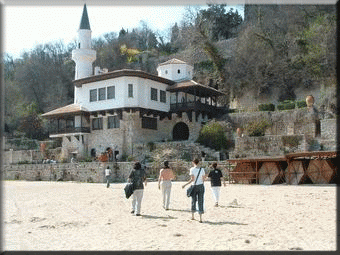ВАРНА РЕГИОН

ВАРНЕНСКИ РЕГИОН
Варненския регион се намира в североизточната част на България. Към него принадлежат източната област на дунавската равнина-Добруджа, Лудогорието и източна граница -крайбрежната ивица на северна България.
Туризмът един икономически отрасъл на този край е исторически свързан с развитието на североисточна България. Не случайно тук в севрните части на българското крайбрежие са построени най известните курорти на страната като Албена.Златни пясъци св.св.Константин и Елена
През 1882 г по проект на архитекта от Виена Рупелмаер 8 км северно от Варна започва строителсвото на двореца Евксиноград който тогава е носил името Сандрово (на княз Александър Батенберг Сандро)
През 1882 г княз Батенберг получава кото подарък от гръцкия архиепископ манастира Св. Димитързаедно с принадлежащото му лозе, полски имоти, и други владения които са се намирали в тази област. По късно княза е разширил своето владение до сегашните граници от около 80 хектара. През 1893г по желание на княгиня Мария Луиза жената на новия български цар Фердинанд двореца е преименован на Евксиноград- Гостоприемен град. Изграждането на сегашния парк Евксиноград е започнало през 1890г. Повече от 200 различни растения от средиземноморието, Азия и Южна Америка лично подбрани от Фердинанд са в смайваща хармония. На пренесена от устието на река Камчия почва тук расте един стогодишен хималайски кедър и около него палми. Два елегантни моста единият от метал а другия от цимент имитират ствола на грамадно паднало дърво като допълват великолепно архитектурата на този парк.
Днес Евсиноград е правителствена резиденция.
ДВОРЕЦЪТ В БАЛЧИК -ЛЯТНОТО МЕЧТАНИЕ НА ЕДНА КРАЛИЦА
Годината е 1924,
Кралицата – Мария Румънска,
а влюбването – от пръв поглед.
47-годишната аристократка била пленена от този къс българска земя, който криел между балчишките бели скали и морето частица от рая.
Вековните дървета, полските цветя, ручеите и птиците, дори заглъхналите стари воденици и пресъхналите каменни чешми омагьосали първата дама на Румъния.
В следващите две години по поръчение на Кралица Мария министерството на обществените имоти изкупило един по един
малките парцели земя заедно със запустелите воденици сред тях.
Тогава дошъл редът на архитектите строители Августино и Америго, които били извикани от Италия и на цветаря Жул Жани от Швейцария. Много български майстори от околността също дали своя труд за преобразяването на полския пейзаж
Цел на всеки турист отправил се към Балчик е да посети двореца
Тихото гнездои единсвения по рода си парк който се разпростира на площ от 35 хектара.
Над 3000 растения растат тук което показва че климата в тази част на българско черноморие е благоприятен за флората на средиземноморието както и за редките растения от четирите различни
края на света.
Като шедьовър на парка са розариума и най голямата в Европа сбирка от кактуси която надхвърля над 250 вида.
Пътуването из парка отвежда до единствения в света дворец с минаре в пълна хармония с купола на джамия, мраморен трон донесен от Флоренция, мост на въздишките, голям глинен съд от Мароко, кладенец в средиземноморски стил , басейн в мавритански стил.
Една легенда гласи че кралица Мария до такава степен привикнала с това место че нейното желание е било да остане тук и след смъртта си.
Намира се на 14 км северно от Варна и е от познатите скални манастири по българското крайбрежие.
Монашеските килии и параклиса се намират в естествени пещери които са се образували във варовиковите скали.
От 17-18 век манастира не функционира.
Врязан 2км в морето нос Калиакра е най дългият по Българското крайбрежие. Името му хубав нос идва от оцветените в бордо отвесни и високи скали.
Построена още от епохата на елинизма крепостта Калиакра преживявя своите бурни времена през 14 век по времето на българския болярин Балик. По времето на турското нашествие след падането на крепоста остават само 40 момичера които скачат от скалите преплели плитките си.
На около 20 км. от Варна се намира природният резерват „Побити камъни“, интересна колекция от каменни колони, достигащи до 7 м. височина. Първото впечатление, което създават е за разрушен храм, но учените са доказали, че това е геологическа формация на сталагмити, някой от които са на 50 млн. години.
